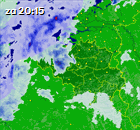Dipole shape variations..
The wire of a dipole doesn’t have to be run in a straight line. A dipole doesn’t have to be perfectly horizontal. That’s the way it is usually depicted in books and magazin es, but you can bend the legs of the antenna up, down or sideways. If you make either wire one-half wavelength long and carefully prune it to resonance, you can use it without a tuner on and near its resonant frequency. Both antennas have the current part at the top where most of the radiation takes place. The vertical parts of these antennas radiate a weak vertically polarized wave. The only reason these dipoles are contorted this way is to make them full-sized and to fit in the available space. Other shapes are possible, and you can be creative at your location. There are many more dipoles than the ones just described.
es, but you can bend the legs of the antenna up, down or sideways. If you make either wire one-half wavelength long and carefully prune it to resonance, you can use it without a tuner on and near its resonant frequency. Both antennas have the current part at the top where most of the radiation takes place. The vertical parts of these antennas radiate a weak vertically polarized wave. The only reason these dipoles are contorted this way is to make them full-sized and to fit in the available space. Other shapes are possible, and you can be creative at your location. There are many more dipoles than the ones just described.
Calculating the length of a ½-wave Resonant Dipole..
The approximate length in meters of a ½-wave resonant dipole is found by:
142.5 / freq MHz = length in meters
The wire of a dipole doesn’t have to be run in a straight line. A dipole doesn’t have to be perfectly horizontal. That’s the way it is usually depicted in books and magazin
 es, but you can bend the legs of the antenna up, down or sideways. If you make either wire one-half wavelength long and carefully prune it to resonance, you can use it without a tuner on and near its resonant frequency. Both antennas have the current part at the top where most of the radiation takes place. The vertical parts of these antennas radiate a weak vertically polarized wave. The only reason these dipoles are contorted this way is to make them full-sized and to fit in the available space. Other shapes are possible, and you can be creative at your location. There are many more dipoles than the ones just described.
es, but you can bend the legs of the antenna up, down or sideways. If you make either wire one-half wavelength long and carefully prune it to resonance, you can use it without a tuner on and near its resonant frequency. Both antennas have the current part at the top where most of the radiation takes place. The vertical parts of these antennas radiate a weak vertically polarized wave. The only reason these dipoles are contorted this way is to make them full-sized and to fit in the available space. Other shapes are possible, and you can be creative at your location. There are many more dipoles than the ones just described.Calculating the length of a ½-wave Resonant Dipole..
The approximate length in meters of a ½-wave resonant dipole is found by:
142.5 / freq MHz = length in meters
The approximate length in feet of a ½-wave resonant dipole is found by:
468 / freq MHz = length in feet
468 / freq MHz = length in feet
The actual length of it will be determined by several factors. Using larger diameter wire will make the dipole resonate lower in frequency. Therefore, to make it resonant at the higher desired frequency, it must be shortened. Raising a dipole higher above ground will make it resonate higher in frequency. An insulated wire will make the dipole resonate lower in frequency than a bare wire. Using the above formulas, cut the antenna a little longer than the calculations say. If the SWR is best at a lower frequency than you desire, the antenna will have to be made shorter by pulling the excess wire through the end insulators, folding the ends of the extra wire back on itself. Then wrap the ends of the overlapped wire on itself so it wont come loose. This causes the excess wire to "short" itself to the rest of the antenna. If you are using insulated wire, you will need to cut off the excess wire. The reverse is true if the antenna resonates too high in frequency. The extra wire can be let out to make it resonate on a lower frequency. This is why you originally cut the wire a little longer.




0 reacties:
Een reactie posten